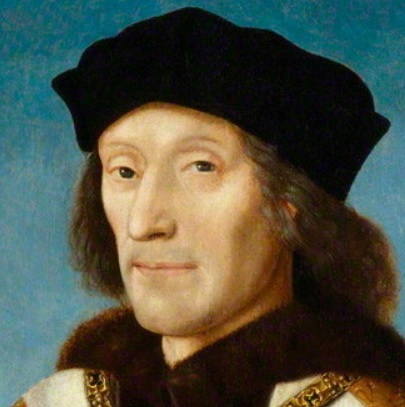
On the 30th of October in 1485 in Westminster Abbey the Tudor dynasty officially began with the coronation of King Henry VII. His reign had begun two months earlier on a battle field but it was cemented and celebrated two months later in the ancient walls of Westminster Abbey.
By taking the throne, he brought to an end the War of the Roses. He had beaten Richard III who had become king in 1483 when he challenged the legality of the young king, his nephew, Edward V. His reign had been tumultuous and Henry had plotted to return and claim the crown. His win was interpreted by many people at the time as a sign from God. Henry VII is the last English king to obtain the throne on the battlefield.
Henry VII’s coronation is similar to modern day coronations. He purposefully timed his ceremony to be before Parliament met. This was done so there could be no question that he obtained the crown on his own, not through appointment. He also made sure he was crowned before his long planned wedding to Edward V’s older sister, Elizabeth of York, who had a better claim to the throne that him. It was to demonstrate that Henry was king through his own right, not because of his wife.
The night before Henry VII stayed at the Tower of London. The following morning he processed through the streets to Westminster Abbey. Though there had been years of unrest and division, the idea of a coronation brought the people together. There were celebrations, crowds and bonfires to celebrate the new king. Fountains of wine ran for the revelers.
Upon entering Westminster Abbey, Henry followed his uncle, the Duke of Bedford who was carrying the crown on a cushion and his step-father, the Earl of Derby who was holding the sword of state. The Earl of Oxford was carrying his train. These men were given the titles the day before by Henry VII for loyalty and service.
The Archbishop of Canterbury, Thomas Bourchier, presided over the ceremony. Henry VII is the third king he had crowned and he was now elderly. Though he was assisted by bishops, the Archbishop did declare that Henry is the ‘rightful and undoubted inheritor by the laws of God and man’ to the English crown.
Like coronations today, Henry took the coronation oath, was anointed with oils and prayers were said. Upon receiving St. Edward’s Crown, it is believed his mother, Margaret Beaufort, broke out into tears of joy. Peers paid the new king homage and a mass was said.
After the service, King Henry VII processed to Westminster Hall for a feast. As he had done for Richard III and would do Henry VIII, Sir Richard Demoke, rode in on horseback. He threw down his gauntlet and challenged anyone who would deny Henry VII’s right to the throne.
Henry VII is famous for being frugal but he spared no expense for his coronation. This was another way to show his legitimacy as king. For the feast decorations, Welsh red lions were sewn in gold thread on red velvet. The red rose was also prominent in the festivities.
In January 1486, Henry VII married Elizabeth of York, uniting the formally warring houses of Lancaster and York. They went on to have seven children. Their second son succeeded his father as Henry VIII and the Tudor dynasty lasted for 100 years, ending with Queen Elizabeth I.

